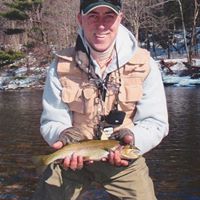Lawrence H Wolff
age ~66
from Plainview, NY
- Also known as:
-
- Lawrence Karen Wolff
- Lawrence H Wolf
- Lawrence A Wolf
- Larry H Wolff
- Phone and address:
-
2 Newcastle Ave, Hicksville, NY 11803
(516)9423923
Lawrence Wolff Phones & Addresses
- 2 Newcastle Ave, Plainview, NY 11803 • (516)9423923
- New York, NY
- Melville, NY
Work
-
Company:Equinox corp.
-
Address:265 East 66Th St, New York, NY 10021
-
Phones:(212)2880627
-
Position:Ceo
-
Industries:Business Associations
Education
-
School / High School:St Johns University
Ranks
-
Licence:New York - Currently registered
-
Date:1987
Isbn (Books And Publications)

Physics Based Vision: Principles and Practice Radiometry
view sourceAuthor
Lawrence B. Wolff
ISBN #
0867202947

Physics Based Vision: Principles and Practice Color
view sourceAuthor
Lawrence B. Wolff
ISBN #
0867202955

Physics Based Vision: Principles and Practice Shape Recovery
view sourceAuthor
Lawrence B. Wolff
ISBN #
0867202963
Medicine Doctors

Lawrence J. Wolff
view sourceSpecialties:
Pediatric Hematology-Oncology
Work:
OHSU Pediatric Hematology/Oncology
3181 SW Sam Jackson Park Rd FL 10, Portland, OR 97239
(503)4185150 (phone), (503)4185169 (fax)
3181 SW Sam Jackson Park Rd FL 10, Portland, OR 97239
(503)4185150 (phone), (503)4185169 (fax)
Education:
Medical School
University of Missouri, Columbia School of Medicine
Graduated: 1964
University of Missouri, Columbia School of Medicine
Graduated: 1964
Procedures:
Bone Marrow Biopsy
Chemotherapy
Chemotherapy
Conditions:
Hemolytic Anemia
Hodgkin's Lymphoma
Leukemia
Anemia
Iron Deficiency Anemia
Hodgkin's Lymphoma
Leukemia
Anemia
Iron Deficiency Anemia
Languages:
English
Russian
Spanish
Vietnamese
Russian
Spanish
Vietnamese
Description:
Dr. Wolff graduated from the University of Missouri, Columbia School of Medicine in 1964. He works in Portland, OR and specializes in Pediatric Hematology-Oncology. Dr. Wolff is affiliated with Oregon Health Science University Hospital.
Lawyers & Attorneys

Lawrence Wolff

Lawrence Keith Wolff, New York NY - Lawyer
view sourceAddress:
Metropolitan Life Insurance Co. Legal Affairs
1095 Avenue Of The Americas Fl 19, New York, NY 10036
(212)5784461 (Office)
1095 Avenue Of The Americas Fl 19, New York, NY 10036
(212)5784461 (Office)
Licenses:
New York - Currently registered 1987
Education:
St Johns University
Name / Title
Company / Classification
Phones & Addresses
CEO
Equinox Corp.
Business Associations
Business Associations
265 East 66Th St, New York, NY 10021
Director
Glen Rock Board of Education
Principal
Founders Holding Corp
Holding Company
Holding Company
120 5 Ave, New York, NY 10011
Managing
WOLFF DENNYS LLC
Managing
WOLFF TRAVEL PLAZA LLC
Controller
Tice Food Service Corp
Manager
Equinox Corp
Us Patents
-
Visualization Of Local Contrast For N-Dimensional Image Data
view source -
US Patent:6539126, Mar 25, 2003
-
Filed:Apr 16, 1999
-
Appl. No.:09/292740
-
Inventors:Diego A. Socolinsky - Baltimore MD
Lawrence B. Wolff - New York NY -
Assignee:Equinox Corporation - New York NY
-
International Classification:G06T 500
-
US Classification:382274, 345617, 382154
-
Abstract:A method is presented for the treatment and visualization of local contrast in n-dimensional multispectral images, which directly applies to n-dimensional multisensor images as well. A 2Ã2 matrix called the contrast form is defined comprised of the first derivatives of the n-dimenional image function with respect to the image plane, and a local metric defined on n-dimensional photometric space. The largest eigenvector of this 2Ã2 contrast form encodes the inherent local contrast at each point on the image plane. It is shown how a scalar intensity function defined on n-dimensional photometric space is used to select a preferred orientation for this eigenvector at each image point in the n-dimensional image defining the contrast vector field for an n-dimensional image. A grey level visualization of local n-dimensional image contrast is produced by the greylevel image intensity function such that the sum of the square difference between the components of the gradient vector of this intensity function and the components of the contrast vector field is minimized across the image plane. This is achieved by solving the corresponding Euler-Lagrange equations for this variational problem.
-
Common Aperture Fused Reflective/Thermal Emitted Sensor And System
view source -
US Patent:6781127, Aug 24, 2004
-
Filed:Jun 8, 2001
-
Appl. No.:09/876152
-
Inventors:Lawrence B. Wolff - New York NY
Marvin Hutt - Oakland NJ -
Assignee:Equinox Corporation - New York NY
-
International Classification:H01L 2500
-
US Classification:250332, 250330
-
Abstract:A sensor fusion system simultaneously acquires at least two images in a subspectrum of the visible/NIR/SWIR (0. 4-2. 0 micron) reflective spectrum and in a subspectrum of the thermal infrared (3. 0-15 micron) spectral regions using respective sensing arrays viewing a common aperture. Although sensed by separate focal plane arrays, radiation enters at the front-end of a commonly shared focusing optical system so that all sensed radiation originates along exactly the same optical path and then is directed to each sensing plane. This provides precise co-registration of reflective and thermal infrared imagery regardless of the depth-of-field range of the scene being imaged, and enables the precise integration of image fusion processing and algorithms to fully exploit the complementary properties of reflected and thermally emitted radiation from a scene.
-
Method And Apparatus For Using Thermal Infrared For Face Recognition
view source -
US Patent:7406184, Jul 29, 2008
-
Filed:Jul 3, 2003
-
Appl. No.:10/611859
-
Inventors:Lawrence B. Wolff - New York NY, US
Diego A. Socolinsky - Baltimore MD, US
Christopher K. Eveland - Baltimore MD, US
Andrea Selinger - Princeton NJ, US
Joshua D. Neuheisel - Hampstead MD, US -
Assignee:Equinox Corporation - New York NY
-
International Classification:G06K 9/00
-
US Classification:382118, 382128, 382115
-
Abstract:A methodology and apparatus is described that incorporates the use of thermal infrared imaging into a complete end-to-end face recognition system. Since thermal infrared primarily images emissive phenomenology there are advantages over video imaging in the reflective domain (e. g. , visible, near-infrared) for face recognition, particularly with respect to image invariance in the presence of varying illumination incident on the subject. On the other hand video cameras in the reflective domain provide important image detail not apparent in thermal infrared imagery. Fusion of thermal infrared imagery with reflective domain (e. g. , visible, near-infrared) imagery provides even further advantages. Embodiments of such systems that incorporate thermal infrared imaging for automatic face recognition are important for access control, verification, identification, and surveillance and monitoring.
-
Color Invariant Image Fusion Of Visible And Thermal Infrared Video
view source -
US Patent:7620265, Nov 17, 2009
-
Filed:Apr 12, 2005
-
Appl. No.:11/103640
-
Inventors:Lawrence B. Wolff - New York NY, US
Diego A. Socolinsky - Baltimore MD, US
Christopher K. Eveland - Baltimore MD, US -
Assignee:Equinox Corporation - New York NY
-
International Classification:G06K 9/40
G06K 9/36 -
US Classification:382276, 382254, 382284
-
Abstract:A methodology for forming a composite color image fusion from a set of N gray level images takes advantage of the natural decomposition of color spaces into 2-D chromaticity planes and 1-D intensity. This is applied to the color fusion of thermal infrared and reflective domain (e. g. , visible) images whereby chromaticity representation of this fusion is invariant to changes in reflective illumination.
-
Method And Apparatus For Dynamic Image Registration
view source -
US Patent:8587659, Nov 19, 2013
-
Filed:May 7, 2008
-
Appl. No.:12/116843
-
Inventors:Diego A. Socolinsky - Baltimore MD, US
Joshua Neuheisel - Baltimore MD, US
Lawrence B. Wolff - New York NY, US -
Assignee:Equinox Corporation - New York NY
-
International Classification:H04N 7/18
-
US Classification:348158, 318 47, 318 68, 318208, 318222, 318333
-
Abstract:A methodology and apparatus is described that registers images outputted by at least two video camera sensors that are not necessarily bore-sighted nor co-located together. Preferably this can be performed in real-time at least at video rate. The two video camera sensors can be either of similar or two different modalities (e. g. , one can be intensified visible, while the other can be thermal infrared) each possibly with a different field-of-view. The methodology and apparatus take advantage of a combination of Inertial Measurement Units (IMUs) information and image registration between the two camera sensors from computational image processing. In one preferred embodiment, the system uses a rifle mounted weapon sight camera sensor and a helmet mounted sensor camera. The aim point of the weapon sight camera sensor (e. g. , typically at the image center) zeroed to the true rifle aim point is digitally overlayed as a reticle on the video image from the helmet sensor, displayed on a head mounted display (HMD).
-
Method Of And Apparatus For Obtaining Object Data By Machine Vision Form Polarization Information
view source -
US Patent:50281380, Jul 2, 1991
-
Filed:May 23, 1989
-
Appl. No.:7/355657
-
Inventors:Lawrence B. Wolff - New York NY
-
International Classification:G01J 400
-
US Classification:356369
-
Abstract:A method and apparatus for determining object characteristics such as shape and relative electrical conductivity and for resolving specular and diffuse components of reflection are disclosed. These object characteristics are determined by measuring the following polarization parameters of reflected light from the object surface: (i) the magnitude of the minimum polarization component, (ii) the magnitude of the maximum polarization component, and (ii) the directional orientation of the minimum polarization component. These parameters are used to ascertain at an object point the specular plane and the ratio of the Fresnel reflection coefficients, perpendicular to parallel, with respect to the specular plane. Both of these are used for the determination of the surface normal at object points. The numerical value of the Fresnel reflection coefficient is used to discriminate between surfaces of varying electrical conductivity, lower values indicating highly conductive metals, higher values indicating poorly conducting dielectrics.
-
Method And Apparatus For Determining Electrical Conductivity Of A Surface Of An Object
view source -
US Patent:60468114, Apr 4, 2000
-
Filed:Jan 11, 1996
-
Appl. No.:8/583865
-
Inventors:Lawrence B. Wolff - New York NY
Hua Chen - Baltimore MD -
Assignee:The Johns Hopkins University - Baltimore MD
-
International Classification:G01J 400
-
US Classification:356369
-
Abstract:An apparatus for determining electrical conductivity of a surface of an object. The apparatus comprises a first polarizer for polarizing light incident upon the surface of the object. The apparatus also comprises a camera mechanism for receiving the polarized light reflected from the surface of the object and identifying the electrical conductivity of the surface of the object from phase retardance of polarization of the polarized light upon reflection from the surface of the object. The present invention pertains to a method for determining electrical conductivity of a surface of an object. The method comprises the steps of polarizing light. Next there is the step of reflecting the polarized light off the surface of the object. Then there is the step of receiving the reflected polarized light at a camera mechanism. Next there is the step of converting the received polarized light into a corresponding electrical signal with the camera mechanism.
Resumes

Assistant Dean Of College Advising
view sourceLocation:
Westbury, NY
Work:
Katz Yeshiva High School
Assistant Dean of College Advising
Assistant Dean of College Advising
Education:
Montclair State University 2002 - 2003

Metlife
view sourceLocation:
Great Neck, NY
Industry:
Insurance
Work:
Metlife
Interim Chief Counsel, Us Insurance Law
Metlife
Senior Vice President and Associate General Counsel
Blodnick Abramowitz Aug 1992 - Jul 1994
Associate
New York City Law Department Sep 1987 - Jun 1992
Assistant Corporation Counsel
Sep 1987 - Jun 1992
Metlife
Interim Chief Counsel, Us Insurance Law
Metlife
Senior Vice President and Associate General Counsel
Blodnick Abramowitz Aug 1992 - Jul 1994
Associate
New York City Law Department Sep 1987 - Jun 1992
Assistant Corporation Counsel
Sep 1987 - Jun 1992
Metlife
Education:
St. John's University 1984 - 1987
Doctor of Jurisprudence, Doctorates Saint John's University 1980 - 1984
Bachelors, Bachelor of Science, Finance
Doctor of Jurisprudence, Doctorates Saint John's University 1980 - 1984
Bachelors, Bachelor of Science, Finance
Skills:
Litigation Management
Insurance
Litigation
Insurance Law
Arbitration
Corporate Governance
Mediation
Erisa
Legal Compliance
Attorney
Legal Research
Risk Management
Life Insurance
Civil Litigation
Commercial Litigation
Strategic Planning
Legal Writing
Management
Insurance
Litigation
Insurance Law
Arbitration
Corporate Governance
Mediation
Erisa
Legal Compliance
Attorney
Legal Research
Risk Management
Life Insurance
Civil Litigation
Commercial Litigation
Strategic Planning
Legal Writing
Management

Lawrence Wolff
view source
Lawrence Wolff
view sourceLocation:
United States

Vice Pres. Naugatuck/Pomperaug Chapter At Trout Unlimited
view sourceLocation:
Greater New York City Area
Industry:
Electrical/Electronic Manufacturing

Lawrence Wolff
view sourceLocation:
United States

Senior Cse D/Q At Checkpoint Systems, Inc
view sourceLocation:
Greater New York City Area
Industry:
Electrical/Electronic Manufacturing
Myspace
Youtube
Flickr

Lawrence Wolff
view source
Lawrence Wolff
view source
Lawrence Wolff
view source
Lawrence Wolff
view source
Lawrence David Wolff
view source
Lawrence Wolff
view sourceClassmates

Martin Wolff, Lawrence Hi...
view sourceGet Report for Lawrence H Wolff from Plainview, NY, age ~66













